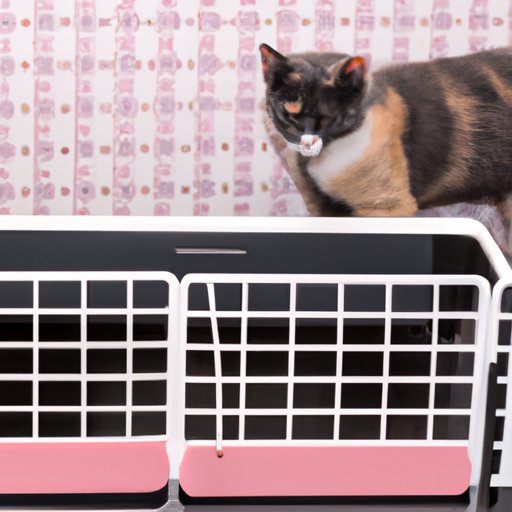
I. Introduction
One of the most common issues cat owners face is their beloved felines scratching furniture. While scratching is a natural behavior for cats, it can cause damage to furniture and become a frustrating problem for owners. The purpose of this article is to provide tips and techniques on how to stop cats from scratching furniture. This article is intended for cat owners who are struggling with this issue and are looking for effective ways to correct their cat’s behavior.
II. Provide alternative scratching surfaces
Providing alternative scratching surfaces is important in redirecting a cat’s natural scratching behavior. Scratching surfaces should be more appealing than the furniture itself. The best alternative surfaces are scratching posts and cardboard scratchers, which can be purchased at pet stores or made at home. When introducing new scratching surfaces, it’s important to place them in areas where the cat likes to scratch, such as near the furniture they’ve been targeting.
III. Use scent deterrents
Cats are sensitive to scents, and certain smells can deter them from scratching furniture. Examples of scents that cats commonly dislike include citrus, lavender, and peppermint. Spraying these scents on the furniture or using essential oils on cotton balls and placing them near the furniture can help keep cats from scratching. It’s important to note that certain scents can be harmful to cats, so it’s essential to use products that are safe for both cats and furniture.
IV. Trim their nails
Trimming a cat’s nails regularly can greatly reduce the damage caused by scratching. It’s essential to use proper technique when trimming a cat’s nails and to make sure the cat is comfortable during the process. Clipping the nails too short can cause discomfort or pain, and leaving them too long can make it difficult for the cat to retract their claws. Nails should be trimmed every three to four weeks, and if it’s a difficult task, seeking professional help may be necessary.
V. Use covers or sprays
In addition to scent deterrents, there are covers and sprays specifically designed to protect furniture from scratches. Furniture covers can be placed over the targeted areas, preventing the cat from scratching the surface. There are also sprays that can be applied to furniture, which have a bitter taste that repels cats. As with scent deterrents, it’s essential to use products that are safe for both cats and furniture.
VI. Distract them with toys
Providing toys for cats can help distract them from scratching furniture. Interactive toys that keep cats engaged are the best choice. Laser pointers, feather wands, and catnip toys are just a few examples of toys that cats love. Introducing new toys to your cats every so often can keep them entertained and prevent them from getting bored and scratching the furniture.
VII. Use positive reinforcement techniques
Positive reinforcement training can help teach cats to scratch appropriately. Praising and rewarding your cat when they use the scratching post can encourage them to use it more often. Redirecting your cat to the scratching post when they start scratching furniture and praising them when they use it can help teach them where it’s appropriate to scratch. It’s important to be consistent and patient when using positive reinforcement techniques.
VIII. Conclusion
Stopping cats from scratching furniture can be a challenging task, but with patience and diligence, it can be accomplished. Providing alternative scratching surfaces, using scent deterrents, trimming their nails, using covers or sprays, distracting them with toys, and using positive reinforcement techniques are all effective ways to stop cats from scratching furniture. It’s essential to always use products and techniques that are safe for cats and furniture. With some time and effort, owners can redirect their cat’s natural behavior and have peace of mind knowing their furniture is safe.
Final tips: Be patient with your cat and try different techniques to see what works best. Monitor your cat closely to prevent them from scratching furniture when you’re not around. Reward your cat for good behavior, and don’t punish them for scratching furniture. With the right approach, you can effectively stop your cat from scratching furniture.





